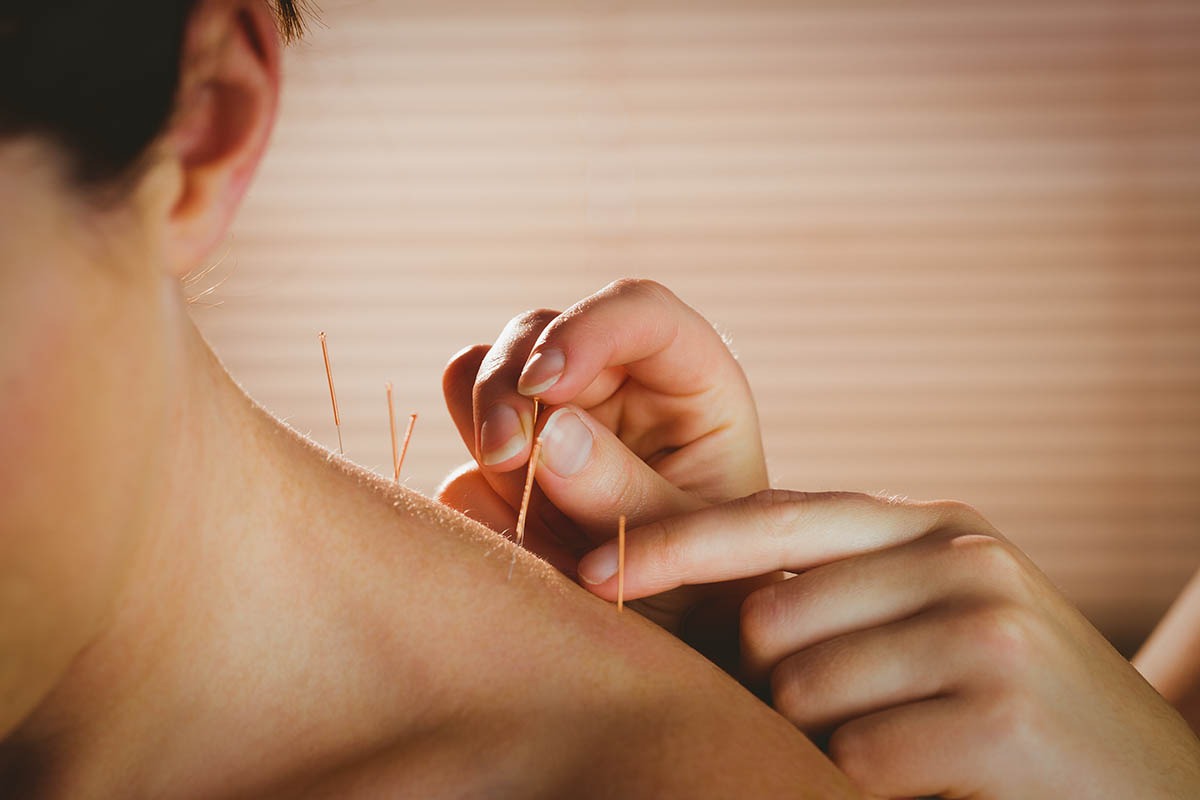ACUPUNCTURE

About Acupuncture
Acupuncture and dry needling have been used by Physiotherapists for many years now. It is widely accepted that needling can have profound effects on the muscle system and provide pain relief.
We use a combination of manual therapy and needling techniques to help unload tissue or provide pain relief for your injury. All our physiotherapists are trained to a high standard and are members of the Acupuncture Association Chartered Physiotherapists.
FAQs:
What is acupuncture?
Acupuncture OR Dry needling is defined as a skilled intervention using a thin needle to penetrate the skin into a muscle to stimulate muscle trigger points, fascia, and connective tissue for the treatment of musculoskeletal pain and conditions of the neck, shoulder, lower back and hips.
What is the difference between traditional acupuncture and western medical acupuncture/dry needling?
Traditional Acupuncture is part of the ancient practice of Traditional Chinese medicine. Chinese medicine practitioners believe the human body has more than 2,000 acupuncture points connected by pathways or meridians. These pathways create an energy flow (Qi, pronounced “chee”) through the body that is responsible for overall health. Disruption of the energy flow can cause disease. By applying acupuncture to certain points, it is thought to improve the flow of Qi, thereby improving health.
Western Dry needling is often used to treat myofascial trigger points (MTrPs), which are described as localized hypersensitive spots in a muscle. These sensitive spots can be found in patients with musculoskeletal pain and generally impact range of motion, strength, and functional movements of everyday life. Insertion of the needle can stimulate chemical processes to promote healing, reduce inflammation, inhibit pain responses, and improve overall muscle stiffness.
How does acupuncture/dry needling work?
Dry needling/acupuncture may produce both local and central nervous system responses to restore balance within the muscle, resulting in a reduction in pain. It has been shown to immediately improve patients pain threshold, range of motion, decrease muscle tone, and decrease pain in patients with musculoskeletal conditions. As pain can be referred from one area of the body to another, dry needling can help to prevent referral patterns of pain (eg: needling the calf muscle can improve referred pain into the Achilles tendon). Studies have found that dry needling inhibits descending pain pathways therefore decreasing the body’s response to painful stimuli.
What conditions do we treat with acupuncture?
- Low back pain
- Neck pain
- Migraine and tension-type headaches.
- Hip pain
- Plantar fasciitis
- Jaw and mouth dysfunction
- Tennis and golfer’s elbow
- Kneecap/patella conditions
- Glute and patella tendinopathy
What are the benefits of acupuncture?
- Increased function and completion of everyday activities
- Reduction in pain (typically lasts for 2-3 days)
- Increased range of movement of different joints (eg: shoulder, hip)
- Reduced muscle stiffness
- Stimulation of tissue healing and recovery
- Decreased stress and anxiety
Does acupuncture hurt?
Acupuncture/dry needling is generally pain-free but depending on the area of the body and intensity of the needling technique, at times can provoke a “dull ache” or brief twitching sensation which subsides within seconds. Post treatment symptoms can last a few hours following the session but generally fully resolve within one day.
How long does it take to feel the effects of Acupuncture?
The effects of acupuncture/dry needling are generally felt shortly after treatment with reductions in pain, muscle stiffness and increased movement being demonstrated when exercising the specific area. These improvements can last for up to 2-3 days post treatment.

